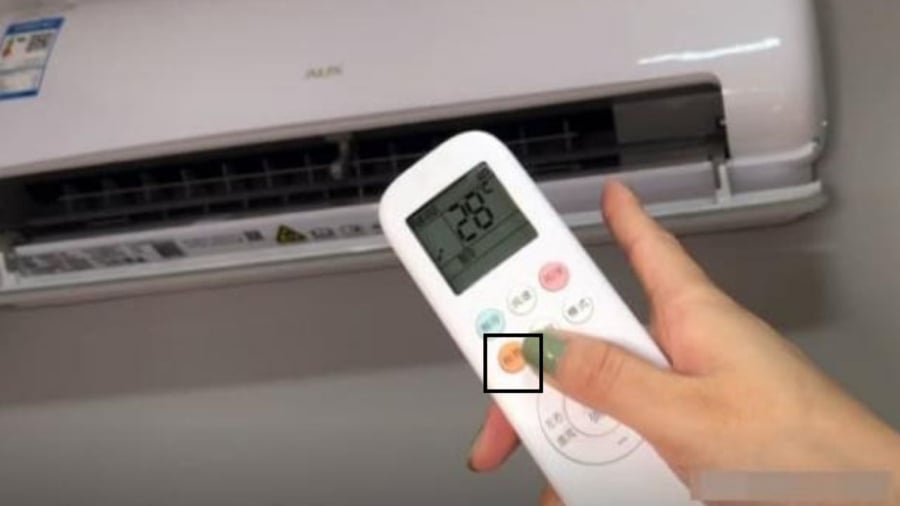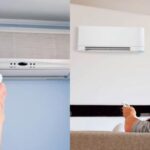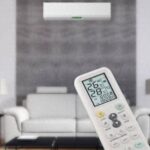As the summer heat intensifies, air conditioners become a savior for families.

The “ECO” Button – A Hidden Treasure on Your AC Remote
The “ECO” button (short for “Economy” or “Ecology”) is often overlooked by users who don’t understand its purpose. In reality, this is an energy-saving mode integrated by the manufacturer to optimize the operation of the air conditioner while ensuring comfort for the user.
1. Save up to 30% on electricity costs
When the ECO mode is activated, the compressor and the indoor fan operate at an optimal capacity – enough to cool the room without wasting energy. Instead of continuously running at maximum capacity, the air conditioner will self-regulate according to the room temperature and the user’s body temperature, reducing your monthly electricity bill by VND 300,000 to VND 500,000.
2. Maintain stable temperatures, prevent temperature shocks
One of the issues with air conditioners is the sudden change in temperature, causing a “freezing” or “scorching” feeling. The ECO mode helps maintain a more stable temperature, reducing the risk of temperature shocks, especially for the elderly, children, or those with pre-existing health conditions.
3. Extend the lifespan of your air conditioner
By reducing the continuous operation pressure, the compressor and other parts of the air conditioner are less likely to be overloaded. This means a reduced risk of breakdowns, lower maintenance costs, and an extended lifespan for your appliance by several years.
How to Use the ECO Button on Your AC Remote
Depending on the brand of your air conditioner (Daikin, Panasonic, LG, Samsung, Gree, etc.), the ECO button may be labeled differently:
- ECO
- Energy Saver
- Power Save
- A green leaf icon
To use:
- Turn on the air conditioner as usual.
- Press the “ECO” button on the remote control.
- Observe the display screen to see the energy-saving icon appear.
When you want to return to the strong cooling mode, simply press the ECO button again to turn off this mode.
Who Should Use ECO Mode?
- Families with children and elderly members: Ensures a stable temperature, preventing them from catching a cold.
- Those who sleep with the air conditioner on all night: Prevents excessive cooling, providing a more comfortable sleep.
- People looking to save on monthly electricity costs: Noticeable reduction in bills.
- Rooms that are frequently air-conditioned but don’t require deep cooling: Such as offices, living rooms during the day.
Notes on Using ECO Mode
- Avoid using ECO mode when the room is extremely hot after turning on the AC – as it will take longer to cool the room.
- On extremely hot days above 38 degrees Celsius, let the AC run normally for 15-20 minutes before switching to ECO mode for better results.
The AC remote control, despite its small size, offers a plethora of useful features. Among them, the ECO button is a hidden treasure. Knowing how to use it wisely will not only save you money on electricity bills and extend the lifespan of your appliance but also protect your family’s health.
Hospitalized for Heat Stroke: The Dangers of Misusing Air Conditioning
Air conditioners are essential home appliances during hot summer days, but they can also pose a danger if not handled carefully. With the soaring temperatures, it’s no surprise that air conditioners have become a necessity in many households. While they provide much-needed relief from the heat, it is important to be mindful of potential hazards associated with their use. From electrical shocks to fire risks, being cautious and aware is key to staying safe while enjoying the cool breeze.
The Perfect Temperature for Energy Savings and Comfort: Unveiling the Secret to Efficient Cooling
During the sweltering summer months, it’s common for households to set their air conditioners to 28 degrees Celsius, believing it to be the optimal temperature for both comfort and energy conservation. However, refrigeration experts refute this notion, asserting that this common practice is, in fact, a misconception.






































